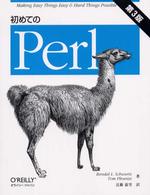- ホーム
- > 洋書
- > ドイツ書
- > Humanities, Arts & Music
- > History
- > miscellaneous
Full Description
Forgeries present a daunting problem to art historians, museums, galleries and curators who face challenges in determining the authenticity of paintings. Recent progress in science has led to the development of new methods for investigating works of art, and can provide new insights into the materials found in paintings. The rise in the value of paintings together with the knowledge and skills of forgers highlights the need to develop reliable scientific procedures to identify fakes. Given the complexity of materials in paintings and the convergence of various disciplines, a methodological approach for nvestigations of paintings is based on art historical, curatorial, aesthetic, technical and scientific evaluation.
In this book sophisticated digital and analytical techniques are reviewed for the identification of materials (pigments, binders, varnishes, adhesives) and the physical characteristics of paintings such as brushstrokes, craquelure and canvas weaves.
This book presents an updated overview of both non-invasive and micro-invasive techniques that enable the material characterization of paintings. The materials constituting a painting are reviewed, as are ways that changes in materials over time can provide insights into chronology and physical history. State-of the art digital metods including multi and hyper-spectral imaging and computational approaches to data treatment will be presented. Analytical techniques developed and optimized to characterize binders, varnishes, and pigments are reviewed, focusing on materials which can provide information on ageing or provenance. Case studies of applications of synchrotron-based methods and the analysis of paintings are given, as are chapters devoted to legal aspects related to authenticity.
Chapter 1 is available open access under a Creative Commons Attribution 4.0 International License via link.springer.com.
Contents
Part I Approaches to the authentication of works of art.- The Eye versus Chemistry? From 20th to 21st Century Connoisseurship.- Scientific Study, Condition Challenges, and Attribution Questions in Yves Tanguy's Oeuvre.- Analytical Approaches to the analysis of paintings: an overview of methods and materials.- Part II Characterization of paintings by digital techniques.- Visible and Infrared Reflectance Imaging Spectroscopy of Paintings and Works on Paper.- Automated Analysis of Drawings at the Stroke Level for Attribution and Authentication using Artificial Intelligence.- Part III Material Characterization of paintings by instrumental techniques.- Analytical pyrolysis of organic paint materials for authentication and attribution.- Direct and hyphenated mass spectrometry to detect glycerolipids and additives in paint.- Luminescence for the analysis of paintings; A. Nevin.- Analysis of natural and synthetic organic lakes and pigments by chromatographic and mass spectrometrictechniques.- Raman analysis of inorganic and organic pigments.- Non-invasive and non-destructive examination of artists' pigments, paints and paintings by means of X-ray imaging methods.- Microchemical Imaging of Oil Paint Composition and Degradation: State-of-the-Art and Future Prospects.- Part V Isotopic analysis for authentication.- Dating of artwork by radiocarbonjdas.- Lead Isotope ratios of lead white: from provenance to authentication.-Part V Case studies.- The role of technical study and chemical analysis on questions of attribution and dating of paintings and on easel painting conservation practice: Selected case studies.- Approaches to Current Issues with Art Forgery, Restoration and Conservation: Legal and Scientific Perspectives.








